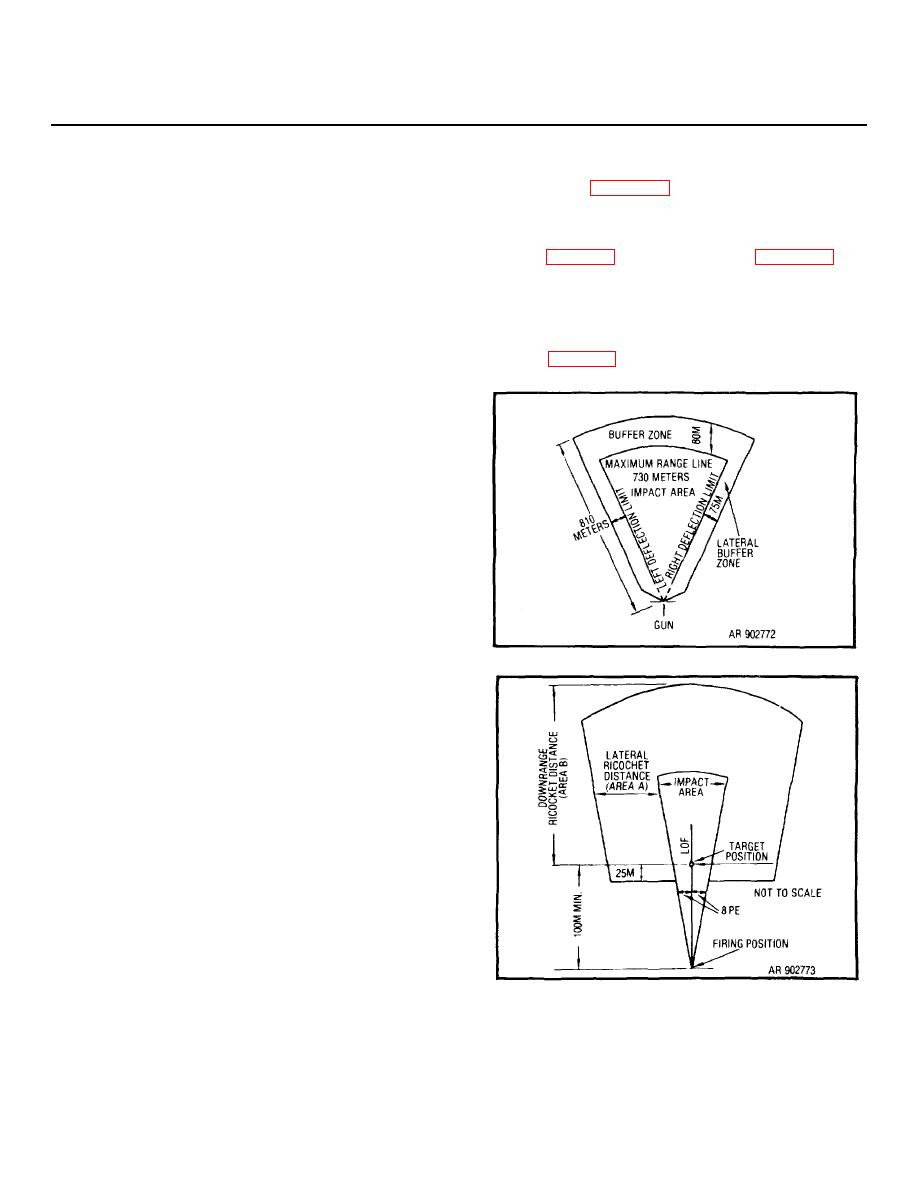 |
|||
|
|
|||
|
Page Title:
Chapter 2. OPERATING INSTRUCTIONS |
|
||
| ||||||||||
|
|
 TM 9-6920-361-13&P
CHAPTER 2
OPERATING INSTRUCTIONS
Section I. PREPARATION FOR OPERATION
2-1. General. The amount of time spent in preparation
(2) Figure 2-1 represents the "worst case"
greatly determines the amount of benefit the unit will
for soft or medium soil conditions. If the area for the
derive from training with the M31. Certain preparations
proposed surface danger zone is limited, the exact
must be made in order to get maximum benefit from the
dimensions for all surface conditions can be determined
equipment in the training kits. Your unit must construct a
by using table 2-1 in conjunction with figure 2-2. For
miniature range, develop a special map, and instruct
example, if the maximum range to be fired was 500
personnel on the use of the equipment. The more
meters, and the impact area was composed of soft soil,
thorough the preparation, the better your training will be.
the surface danger area would extend 580 meters
downrange and the lateral buffer zone would be 25
2-2. Constructing a Firing Range.
meters outside of the right and left deflection limits as
shown in figure 2-3.
a. Select a Range Site. The first step is the
selection of a range site. Commanders may authorize
M31 trainer firing on permanent firing ranges or in other
approved training areas--when such firing is conducted
in accordance with safety requirements which will be
discussed later. The terrain should be slightly rolling.
Otherwise, rounds can be lost in deep ditches, behind
large mounds, or in exceptionally tall (higher than six
inches) grass or weeds.
b. Types of Ranges. Permanent, semipermanent,
and temporary ranges can be constructed.
Their
characteristics are:
(1) Permanent range. A permanent range
is one which is used only for 14.5-mm firing. The
targets, reference points, firing point markers,
observation posts, and other manmade objects are
Figure 2-1. Surface danger zone
permanently emplaced and marked. Most military posts
have sufficient area to accommodate one or more such
ranges.
(2) Semipermanent. A semipermanent
range is one which must be shared with other training
activities or operations, such as known distance rifle
range, drill field or temporary landing field. The targets,
reference points, etc., must be removed after use and all
reference stakes which mark the location of these items
must be at or below ground level. The unit can use the
range on a scheduled basis.
(3) Temporary range. A temporary range is
one which is used by the unit on a one-time basis (e.g.,
one day or one weekend) and is normally on private
property such as a meadow, field, or pasture.
c. Surface Danger Zone.
Figure 2-2. For determining the exact surface
(1) The dimensions of the surface danger
danger area required (Charge 1 only)
zone are dependent on the nature of the firing and the
type of surface conditions present within the surface
danger zone.
2-1
|
|
Privacy Statement - Press Release - Copyright Information. - Contact Us |